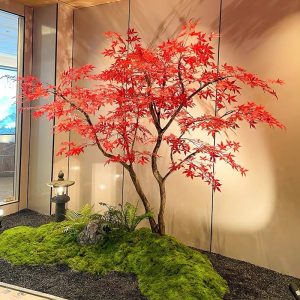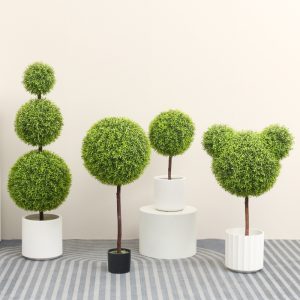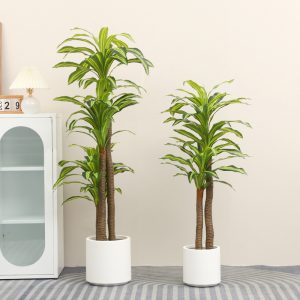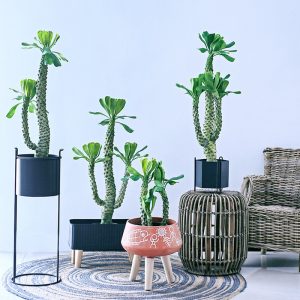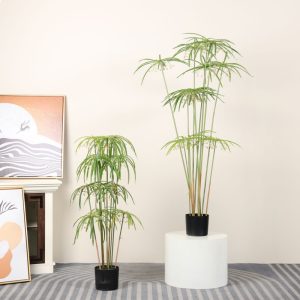On the morning of September 12, 2025, at 11:17 AM, the sunlight of the San Francisco Bay Area spilled over the white porch in front of Camille’s house. I held the brass door knocker and rang the bell for the first time, visiting her new home.
The door opened, and Camille, wearing a striped linen shirt, stood in the foyer, a fresh daisy tucked behind her ear. “Come in, I’ve just made some rosemary black tea,” she said, stepping aside. As I entered, I smelled the rich scent of baked fig bread mixed with a hint of sea salt and a faint “earthy aroma” from the large tree swaying in the center of the living room.
The foyer was decorated with Moroccan-style blue wave-patterned tiles, and an iron chandelier above swayed gently, its glass beads tinkling. The living room was spacious with white walls slightly yellowed with age, and light oak floors gleamed. On the beige linen sofa, there were indigo cushions embroidered with olive branch patterns. That earthy scent was coming from the olive tree standing behind the sofa, about 2 meters tall.
The olive tree stood beneath a round arch, housed in a coarse, reddish-brown ceramic pot, its surface naturally speckled. The trunk was thick, with deep brown textures, and the branches stretched outward, covered in dense, gray-green leaves. Sunlight filtered through the leaves, casting intricate patches of light on the floor.
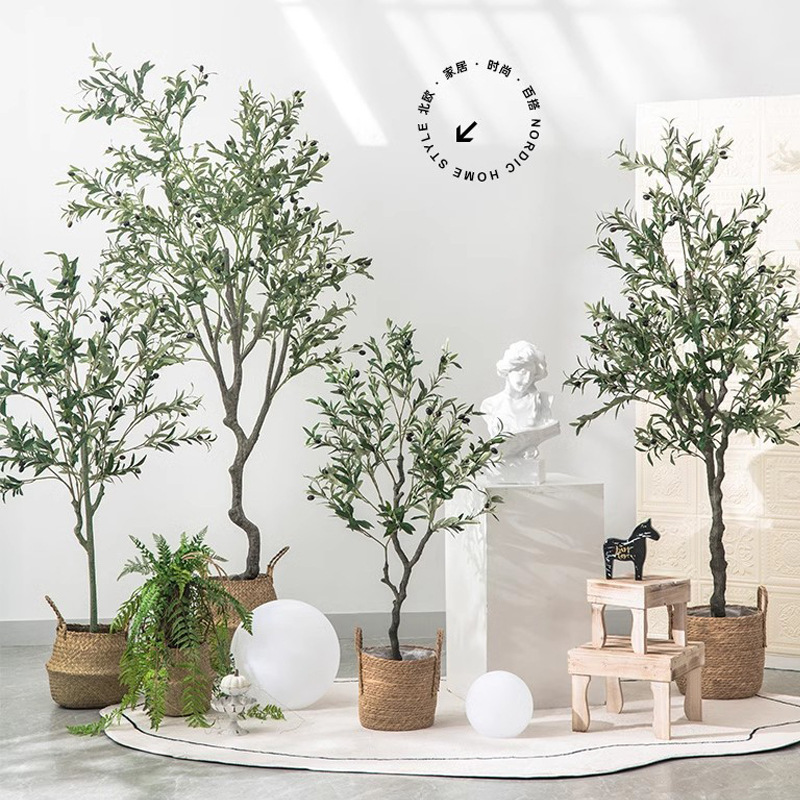
“Are you in awe?” Camille asked, handing me a cup of tea, the droplets from the cup rolling down onto the tray. I snapped out of my daze and gently touched one of the olive leaves. It was thin, flexible, and the veins were clearly visible, with the edges slightly curled. “Is this really artificial?” I couldn’t believe it; it looked so realistic.
“Yes,” Camille smiled, “It really looks like a real tree, doesn’t it?” I leaned closer to the trunk and noticed tiny bumps on the bark, as if traces of insect bites. A gentle breeze blew through the screen window, making the leaves rustle, and for a moment, it felt as if I had returned to a Greek farmhouse from last year.
“I used to have a real olive tree, remember?” Camille leaned against the fireplace. “Last winter, when the heat came on, the leaves fell off like it was raining. I spent a whole week sweeping them up.” I remembered the photo she had taken of the bare trunk.
“But this tree is different,” she said, gently brushing the branches. “Look at this leaf; the movers bumped into it last month when we were moving, and there isn’t a single mark on it.” The sunlight bathed the tree canopy, with the leaves showing rich colors — dark green near the branches, fading into a bluish-gray at the edges. There were also a few green “olives” hanging from the branches.
“I initially wanted to buy a real tree,” Camille continued, pouring more tea. “But I love the look of olive trees so much. Having one in the house feels like bringing Mediterranean sunshine inside.” She pointed at the pillow on the sofa. “See, even the cushion design is inspired by olive branches.”
At that moment, Camille’s daughter Lily ran over, holding a picture book. “Auntie, look at Mommy’s magic tree!” the little girl said as she reached out to grab one of the branches and gently swayed it. I nearly spilled my tea, but the branch only bent slightly, and the leaves stayed firmly in place. “See? It’s sturdy!” Camille laughed and pulled Lily away. “Real tree branches can’t handle that kind of treatment.”
Lily pointed to the “olives.” “Mommy says these fruits will never ripen, so the birds can’t eat them.” I also noticed the “soil” in the pot was made of artificial moss and small stones, and it felt dry to the touch. “And it doesn’t need any watering,” Camille added. “Last time, I spilled coffee in the pot, and after wiping it off, it was fine. The pot’s color hasn’t changed at all.”
Sitting on the sofa with my tea, I couldn’t help but follow the shadow of the tree with my eyes. At noon, the sunlight was brilliant, and the shadow of the olive tree was projected on the white wall. I couldn’t help but wonder if I should also place a smaller artificial olive tree in my own living room.
In the morning light, its shadow would fall on my milk cup; in the evening, the light from the desk lamp would shine on the leaves, as if gilding them with a golden edge. And if I went on a business trip for a week, it would still remain vibrant, unlike the pothos on my windowsill, which protests with yellow leaves.
“My mom always says I treat plants like tasks,” I spun my teacup. “I water them by the calendar, fertilize them with tutorials, and still end up killing them.” Camille handed me a piece of fig bread. “So, I suggest you try something artificial. This olive tree, you just wipe its leaves once a week, and it doesn’t need too much sunlight. It stays green wherever you place it.”
In the afternoon, the sunlight slanted in, casting long shadows of the tree trunk. Camille gently bent one of the branches, and a slightly slanted branch touched the wall. “Its shape can be adjusted to fit any space.” I started imagining placing it in the study: the branches could wind around the bookshelf, and the leaves would hang near the desk lamp. Every time I looked up while reading, I’d see a touch of greenery.
Lily sat under the tree, drawing, and crayon shavings fell into the pot. Camille gently wiped them away, and it was clean in an instant. “If it were a real tree, it would definitely be shedding leaves right now,” she laughed. Watching this tree, I finally understood its magic — it retained the most beautiful aspects of a plant, while removing all the troublesome parts.
As I was about to leave, I was changing my shoes in the foyer and glanced back at the living room. The sunset’s warm glow cast the olive tree’s shadow on the ceiling, and Camille’s husband sat under the tree, playing guitar. The sound of the music blended with the rustling leaves.
“I’ve decided, I’ll buy an artificial olive tree when I get home,” I said as I tied my shoes, excited. “It’ll be perfect next to the weathered wood table on my balcony, blocking some sunlight.” Camille smiled and handed me a business card. “This store has the most realistic artificial olive trees. Make sure to choose the one with olives.”
In the car, with the air conditioning still not fully cool, I started imagining the south-facing spot on my balcony, with sunlight filtering through the leaves and casting light on my coffee cup. The terracotta-colored pot would match the wicker chairs, and on weekend mornings, I’d sit under the tree, reading the newspaper, with freshly baked bread at my feet — it would be just like Camille’s house.
In the rearview mirror, the white house gradually disappeared, but the shadow of the olive tree was deeply etched in my mind.
When I got home, I immediately opened my computer and searched for “artificial olive tree.”








